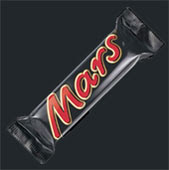§ 222.3 What areas does this regulation cover?
(a) This part prescribes standards for sounding locomotive horns when locomotives approach and pass through public highway-rail grade crossings. This part also provides standards for the creation and maintenance of quiet zones within which locomotive horns need not be sounded.
(b) The provisions of this part are separate and severable from one another. If any provision is stayed or determined to be invalid, it is the intent of FRA that the remaining provisions shall continue in effect.
© This part does not apply to any Chicago Region highway-rail grade crossing where the railroad was excused from sounding the locomotive horn by the Illinois Commerce Commission, and where the railroad did not sound the horn, as of December 18, 2003.
§ 222.5 What railroads does this regulation apply to?
This part applies to all railroads except:
(a) A railroad that exclusively operates freight trains only on track which is not part of the general railroad system of transportation;
(b) Passenger railroads that operate only on track which is not part of the general railroad system of transportation and that operate at a maximum speed of 15 miles per hour over public highway-rail grade crossings; and
© Rapid transit operations within an urban area that are not connected to the general railroad system of transportation. See 49 CFR part 209, appendix A for the definitive statement of the meaning of the preceding sentence.
§ 222.7 What is this regulation's effect on State and local laws and ordinances?
(a) Except as provided in paragraph (b) of this section, issuance of this part preempts any State law, rule, regulation, or order governing the sounding of the locomotive horn at public highway-rail grade crossings, in accordance with 49 U.S.C. 20106.
(b) This part does not preempt any State law, rule, regulation, or order governing the sounding of the locomotive horn at any highway-rail grade crossing described in §222.3© of this part.
© Except as provided in §§222.25 and 222.27, this part does not preempt any State law, rule, regulation, or order governing the sounding of locomotive horns at private highway-rail grade crossings or pedestrian crossings.
. . . .
Subpart B—Use of Locomotive Horns
§ 222.21 When must a locomotive horn be used?
(a) Except as provided in this part, the locomotive horn on the lead locomotive of a train, lite locomotive consist, individual locomotive, or lead cab car shall be sounded when such locomotive or lead cab car is approaching a public highway-rail grade crossing. Sounding of the locomotive horn with two long, one short, and one long blast shall be initiated at a location so as to be in accordance with paragraph (b) of this section and shall be repeated or prolonged until the locomotive or train occupies the crossing. This pattern may be varied as necessary where crossings are spaced closely together.
(b)(1) Except as provided in paragraph (b)(2) of this section, the locomotive horn shall begin to be sounded at least 15 seconds, but no more than 20 seconds, before the locomotive enters the crossing.
(2) Trains, locomotive consists, and individual locomotives traveling at speeds in excess of 45 mph shall not begin sounding the horn more than one-quarter mile (1,320 feet) in advance of the nearest public highway-rail grade crossing, even if the advance warning provided by the locomotive horn will be less than 15 seconds in duration.
© As stated in §222.3© of this part, this section does not apply to any Chicago Region highway-rail grade crossing at which railroads were excused from sounding the locomotive horn by the Illinois Commerce Commission, and where railroads did not sound the horn, as of December 18, 2003.
§ 222.23 How does this regulation affect sounding of a horn during an emergency or other situations?
(a)(1) Notwithstanding any other provision of this part, a locomotive engineer may sound the locomotive horn to provide a warning to animals, vehicle operators, pedestrians, trespassers or crews on other trains in an emergency situation if, in the locomotive engineer's sole judgment, such action is appropriate in order to prevent imminent injury, death, or property damage.
(2) Notwithstanding any other provision of this part, including provisions addressing the establishment of a quiet zone, limits on the length of time in which a horn may be sounded, or installation of wayside horns within quiet zones, this part does not preclude the sounding of locomotive horns in emergency situations, nor does it impose a legal duty to sound the locomotive horn in such situations.
(b) Nothing in this part restricts the use of the locomotive horn in the following situations:
(1) When a wayside horn is malfunctioning;
(2) When active grade crossing warning devices have malfunctioned and use of the horn is required by one of the following sections of this chapter: §§234.105, 234.106, or 234.107; or
(3) When grade crossing warning systems are temporarily out of service during inspection, maintenance, or testing of the system.
© Nothing in this part restricts the use of the locomotive horn for purposes other than highway-rail crossing safety (e.g., to announce the approach of a train to roadway workers in accordance with a program adopted under part 214 of this chapter, or where required for other purposes under railroad operating rules).
§ 222.25 How does this rule affect private highway-rail grade crossings?
This rule does not require the routine sounding of locomotive horns at private highway-rail grade crossings. Except as specified in this section, this part is not meant to address the subject of private grade crossings and is not intended to affect present State or local laws or orders, or private contractual or other arrangements regarding the routine sounding of locomotive horns at private highway-rail grade crossings




